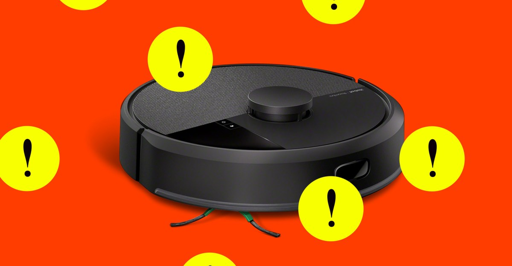Things continue to look bleak for the original robot vacuum maker. iRobot’s third-quarter results, released last week, show that revenue is down and “well below our internal expectations due to continuing market headwinds, ongoing production delays, and unforeseen shipping disruptions,” said Gary Cohen, iRobot CEO, in a press release.
This meant they had to spend more cash and are now down to under $25 million. “At this time, the Company has no sources upon which it can draw for additional capital,” said Cohen.
The Roomba manufacturer has been struggling for several years in the face of increased competition from Chinese manufacturers. A sale to Amazon in 2022 looked to be its lifeline; however, regulatory scrutiny scuppered the deal, and the company was left in further turmoil. It laid off over 30 percent of its staff, lost its founder and CEO, Colin Angle, and was left with substantial debt as a result of the fallout.
This year, iRobot launched an entirely new line of robot vacuums, ostensibly to better compete with companies like Roborock, Ecovacs, and Dreame, adding lidar navigation to its line for the first time (over VSLAM). The new models look significantly different from the original Roombas and more like their competitors. They also use a different app with fewer features, but added some new hardware features the previous models lacked, including spinning mop pads and a roller mop.
In a regulatory filing earlier this month, the company warned it may be forced to seek bankruptcy protection following the breakdown of advanced negotiations with a potential buyer, and if it couldn’t secure additional funding.
Roomba customers are understandably concerned about the impact these current financial troubles might have on their home cleaning robots.
Earlier this month, fellow American robot vacuum manufacturer Neato, which shut down in 2023, pulled the plug on its cloud services, leaving its robots unable to communicate with the Neato app. However, the vacuums can still be controlled manually.
Similarly, if iRobot goes out of business and its cloud shuts down, most Roombas should still continue to work in offline mode — pressing the physical button on the robot to start, stop, and dock it. However, they likely wouldn’t be controllable via the app for features like scheduling or specific room cleaning, or via voice commands. This potential dilemma just further highlights that cloud-connected devices should be enhanced by connectivity, not reliant on it.



You can find out - set up a local DNS (pihole, blocky et. al.) and check which domains the vacuum connects to.
Then block those and see what happens! Interesting experiment for a weekend.
Unplugging the internet is also an option…
Depends how often it phones home?
Some devices are just dandy to only phone home once per day/week/month. Fully completely capable of operating independently except for MBA concerns.
My daughter’s toy was like this. The company went bankrupt. Servers went down. The device worked for 30 days then it never worked again.
I doubt you’d want to turn off the Internet for 30 days…
Connect it to a spare access point, create a custom filtering rule on the router…
If it’s a CRL-200S based robot, the manufacturer will straight up brick it within a few days.